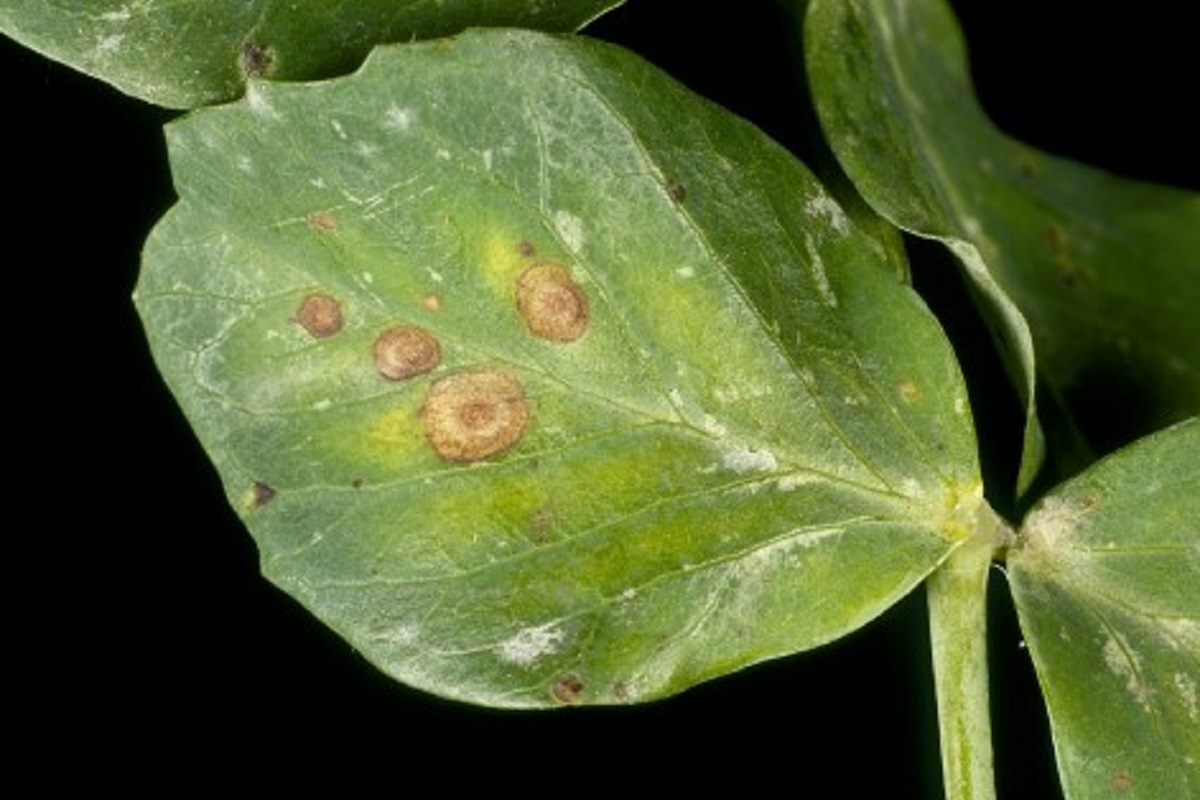
American Phytopathological Society Press, St. Compendium of Wheat Diseases and Pests, 3rd Edition. ^ Ascochyta Leaf Spots of Cereals and Grasses in the United States.Ascochyta leaf blight of turf has become a common, although minor, disease of Kentucky bluegrass lawns in the United States. Ascochyta can also cause leaf blight of turf grasses, so its importance is not limited to cereal grain crops. The air-borne ascospores have been implicated in late summer asthma. Symptoms are often observed later in the season, towards the end of grain filling, when disease is unlikely to cause significant yield loss. The disease is of relatively minor economic importance but is likely to contribute to foliar death in individual crops. Removing grassy weeds that can harbor the pathogen also decreases the presence of inoculum. Reduced irrigation prevents the spread of conidia from infected leaves to healthy leaves by decreasing dispersal of conidia. Sanitation through removing all plant debris from the field at the end of the season reduces the inoculum for the following season. Applying fungicides at the beginning of the season reduces the number of sporulating pycnidia and mycelium that overwintered. Fungicides that are listed as providing 'Very Good' control of Septoria leaf blotch include Azoxystrobin 22.9%, Pyraclostrobin 3.6%, and Propiconazole 41.8%. These include: crop rotation, fungicide application, variety selection, irrigation management, tillage to reduce residue, and good grassy weed control. Effective controls for a similar disease, Septoria leaf blotch, have been prescribed for Ascochyta leaf spot diseases. Dense foliage, which promotes high relative humidity, also promotes disease.Ĭurrently, specific controls for Ascochyta leaf spot diseases have not been clearly described. High humidity and temperature promote sporulation. Because the fungus overwinters in plant debris on or in the soil and conidia are dispersed by rainsplash, initial infections occur on leaves in close proximity to the soil. Leaf spotting symptoms are often associated with high humidity, warm temperatures, dense foliage, and leaves in contact with soil. Air-borne ascospores disperse in the fall and may cause primary infections the following season. Perithecia have also been observed in lesions and have been demonstrated to produce ascospores in later summer. The fungus overwinters as mycelium and pycnidia in host debris. Secondary infection occurs when pycnidia produce more conidia during the growing season that are again dispersed by rainsplash and spread to new leaves for infection. Black pycnidia can be observed in lesions. Infections lead to leaf spots which eventually develop into lesions. In the spring, the primary inoculum is thought to be conidia, which are produced from pycnidia, and are dispersed by rainsplash to infect leaves. The fungus often invades damaged leaf tissue caused by physical damage but can also penetrate through natural openings, such as stomata.

Pycnidia can be found within the lesions are generally black in color. Later, they develop a brown margin with a white center and split longitudinally. Lesions are usually elliptical and are initially chlorotic. Symptoms are found on lower leaves early in the season and upper leaves later in the season. Hosts species include wheat, barley, oats, rye, triticale, turfgrasses and many other grass species found throughout the world. Ascochyta sorghi, Sorghum rough leaf spot.


 0 kommentar(er)
0 kommentar(er)
